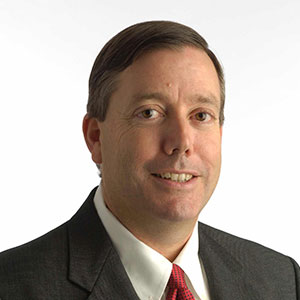Most senior patients or those with chronic illnesses wait until the last minute—when things are going wrong—to contact their physician. They complain of feeling poorly, but neither patient nor physician has access to the data that can pinpoint a problem. This can oftentimes lead to unplanned trips to the doctor’s office, clinic or the emergency
Healthcare, however, has changed rapidly over the last few years. In the age of COVID-19, patients are willing to do everything they can to avoid contact with people outside their circle, especially those who also might have compromised immune systems. Luckily, technology has kept pace with the need for remote care. Many seniors are now open to adopting solutions that can monitor their vital signs such as pulse, oxygen levels, temperature, weight, blood glucose and other statistics in real time and over time to detect any issues, while they remain safely in place at home or short- or long-term living facility. This gives physicians deeper insight into the health of their patients earlier in the cycle, allowing them to intervene much more quickly if the patient’s vital statistics indicate a trend downward.
RPM is a fundamentally different way to practice healthcare, and early intervention via RPM is returning better outcomes for patients. RPM offers real-time recordings of vital signs. Previously doctors relied on patients to use store-bought devices, take vital signs correctly and communicate that information in a timely fashion. RPM is designed to provide information in between office visits and also connect care team members with their patients at the right time with the right information.
RPM gives physicians access to larger data sets for an overall better picture than a single report of a vital sign, such as high blood pressure. For clinicians, RPM provides rich data sets over time and allows the provider to spot and react to trends in the data. Additionally, physicians can also gain immediate insight to how the patient is actually feeling at that time and escalate to a phone call or video call. Having that direct access for quick intervention decreases ER/hospital
Digital Literacy of Seniors
Living independently is critically important to seniors, but their health and safety also must be ensured. Many seniors give up their independent lifestyles simply because they are afraid of falling, they forget to take their medication occasionally, they can’t get to the doctor as often as they need to, or because their families live far away and cannot check on them. Utilizing solutions such as RPM helps to ease these concerns, allowing seniors to age in place while having a safety net in place.
At the same time, the digital literacy of seniors is a very real issue when it comes to adopting healthcare technology. According to a recent survey, 61% of physicians say lack of digital literacy among patients is a major barrier to telehealth. And a Pew Research Center report said that one in five adults reported they are not able to identify common technologies that are also used in healthcare solutions, such as two-factor authentication.
The more patients use RPM, however, the more comfortable and involved they become. A recent trial, at a large health system in West Virginia, showed that 75% of patients presented with the opportunity to use RPM as part of their healthcare treatment did so, and of those participants, 80 percent would participate in further trials because it was “easy” to do so.
These surveys show that to increase adoption of RPM solutions and pave the way for early intervention, ease of use is critical.
Understanding RPM Technology
But what does ease of use really mean? To best define it, it’s important to look at some of technology considerations for RPM solutions.
1. Purpose-built for seniors. Every aspect of an RPM solution should consider senior patients’ experience in using both the devices and the platform. From a device perspective, a video console should be purpose built for RPM, not retrofitted from existing consumer smartphones or tablets like iPads. The video console should be simplistic for the user, yet feature-packed, with large fonts for easy reading. This purpose-built capability allows the user to provide a wealth of information digitally to the care team, and the care team to be summoned with the click of a button or a voice command, either from a wearable device, or from the RPM video console itself.
One example of what it means to have a solution purpose-built for seniors is the device’s speakers and microphones. Microphones must be ultrasensitive to be able to pick up the user’s voice from across the room when the microphone button is pushed or a question is asked, while speakers must be adjustable so that even the hardest of hearing patients can receive instructions from their care team. Video consoles built for general consumer use do not have the ability to go beyond the highest microphone or speaker settings without significant adjustments.
“Always available” two-way voice communications is the most effective way to help senior patients in their homes, so communication—both with live providers and through automation—must be engaging. Patients want to know they can be connected 24/7 to a care team that knows their case history. But voice communication means more than two-way communications; it also includes verbal confirmation from the system that when a patient uses a vital sign monitor, such as a scale, the results have been recorded and sent to their care team. This means both a voice confirmation and a visual one.
Video increasingly is growing in importance in RPM solutions as well. RPM solutions must support the escalation of a voice call to a video call when warranted or requested. This should be easy to do with the push of a button. Video instruction with clear directions is also important if a user needs assistance.
2. Preconfigured out of the box. RPM solutions include a range of vital sign monitors to track a patient’s condition in real time and over time. To ensure that senior patients engage in their healthcare by taking vital signs, these devices must be “plug and play” so that patients can take them out of the box, plug them into the wall to recharge the battery, and use them immediately without a complicated set-up process.
Likewise, Video console should just work when it is powered, automatically connect through cellular and have their vital sign monitors pre-paired and ready to use.
3. Cellular connectivity is enabled. Cellular connectivity provides “always on” connectivity, eliminating potential configuration problems that can be associated with WiFi in the home. According to Pew Research Group, as of 2019, only 59% of people over 65 have access to broadband connectivity at home. That makes it challenging to utilize WiFi in RPM solutions, which require a continuously reliable 24×7 data connection.
One of the benefits of cellular is its ubiquitous nature; people understand how cellular works. For patients aged 65 and older, 91% own a cellphone and of those, 53% own a smartphone, according to Pew Research Group.
Another benefit is using cellular is its simplicity of set-up. For many RPM devices, complicated configuration is not required. Users simply turn on their RPM solution like they would their cellphone and it automatically connects to the cellular network. WiFi, on the other hand, requires a somewhat complicated process to connect to the wireless network, including password set-up. WiFi networks also have the possibility of losing connectivity when power is lost. With cellular, this is not an issue.
4. Security is front of mind. Security is a big concern for patients and healthcare providers alike. To meet guidelines set forth from organizations and regulations like the Food and Drug Administration (FDA) and The Health Insurance Portability and Accountability Act (HiPAA), RPM solutions also:
- Be closed systems with regards to information flow and data storage
- Ensure all data is checked and encrypted, verifying data integrity
- Have no external or accessible ports
- Be remotely managed with ability to isolate and lock down individual devices
The more advanced RPM solutions have three-factor authentication—by device, location and user. With device authentication, two-factor authentication is used without a human in the loop. The device sends a service request with an identifier unique to each device and the server responds to the device with an encrypted challenge payload. The system then extracts the payload and sends a return message.
With location authentication, when a vital sign reading is taken (or anytime the device checks in), a location is sent. If it doesn’t match patient location on record, the reading is flagged, and the device can be shut down remotely or dropped into a more detailed authentication challenge. With user authentication, each patient is given a separate and unique wearable with a built-in crypto key. When a vital sign reading is made, the system searches for the presence of the wearable. In the near future, voice and facial recognition may also be used to identify users.
Turning Episodic Care into Preventative Care
RPM solutions provide users and healthcare professionals a view of a patient’s health in real time and across a time period, allowing them to intervene early in the patient’s care and well being. However, RPM solutions need to go beyond just taking vital signs and in addition provide regular direct access between patients and care providers via voice or video. Technology has grown significantly over the last year and now allows for quick intervention when issues occur, which decreases emergency room visits and hospital admissions, and increases patient compliance and satisfaction. A care provider can spot trends using RPM technology, for example, being alerted that a patient’s weight is trending upward and acting on it immediately with direct patient contact via voice, video or through a patient survey. This turns episodic care into preventative care and improves the patient experience.







